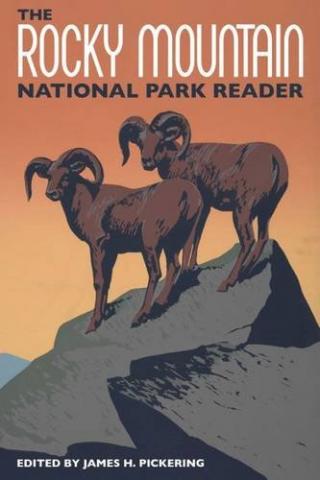This title will be a great addition to libraries of collectors of anthologies of stories and essays from around the National Park System. Through its nearly 280 pages James H. Pickering has masterfully assembled narratives crafted from those who homesteaded the land within today’s park, from naturalists such as Anne Zwinger, Stephen Trimble, SueEllen Campbell, and even from mountain climbers.
There are other “readers” (on Grand Canyon National Park, Yellowstone National Park, and the Pacific Crest Trail, for example), but this title has a preponderance of late 19th century—not 20th century—articles. Released by the University of Utah Press, this book is a particularly rich and entertaining read that helps us understand how this rugged landscape was viewed, used, and appreciated before it became a national park in 1915.
Pickering includes narratives from the likes of Lewis W. Klepinger, who was in a party led by Major John Wesley Powell that was credited as the first to summit Longs Peak. There’s another by the Earl of Dunraven, who arrived in the 1870s and built an 8,000-acre estate in what is now Estes Park.
There’s also a piece from Isabella Lucy Bird, an Englishwoman who summited Longs Peak in 1873. A travel writer of high regard, Ms. Bird published a collection of her letters from Estes Park and the surrounding mountains in 1879, A Lady’s Life in the Rocky Mountains, which brought fame to the region.
“As I intend to make Estes Park my headquarters until the winter sets in, I must make you acquainted with my surroundings and mode of living. The ’Queen Anne Mansion’ is represented by a log cabin made of big hewn logs. The chinks should be filled with mud and lime, but these are wanting,” reads part of the entry in this title. “The roof is formed of barked young spruce, then a layer of hay and an outer coating of mud, all nearly flat. The floors are rough boarded. The ‘living room’ is about sixteen feet square, and has a rough stone chimney in which pine-logs are always burning.”
Not all the entries are so dated. A much more recent piece by Ms. Campbell explores the extraordinary biology of the White-tailed ptarmigans that eke out a living on the tundra near the roof of the park.
“This bird knew just how to behave in winter. Along with the tundra’s other survivors, plants and animals both, she also had the right body. Like the weasel’s white fur, her winter feathers would work as both camouflage and heat collectors; on chilly days, she could find a patch of sunshine, fluff herself out, and let the rays of the sun penetrate the hollow shafts and reach her skin,” she tells us. “The feathers covering her body were double, too, each carrying a second downy branch called an aftershaft, for extra insulation. In short, she was feathered all over. Feathered nostrils would keep the snow and ice from impeding her breathing. Feathered eyelids would do the same for her vision.”
This reader is a must for park lovers, especially those attached to Rocky Mountain. It will give hours of entertainment.





Add comment